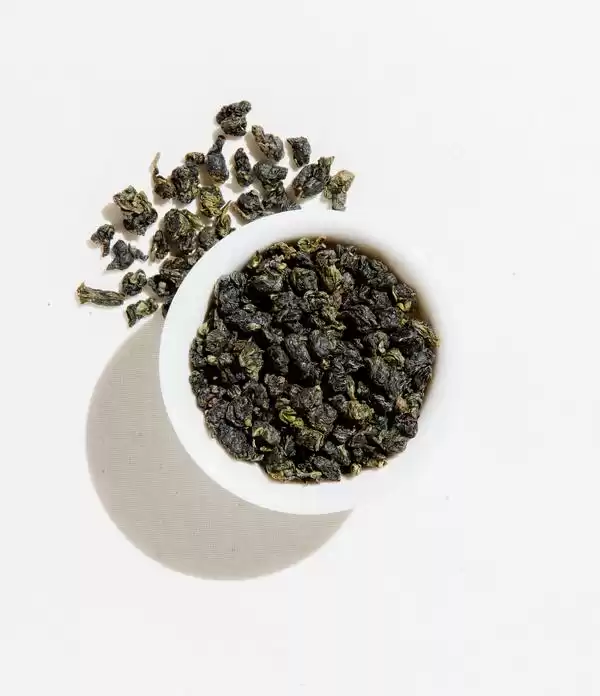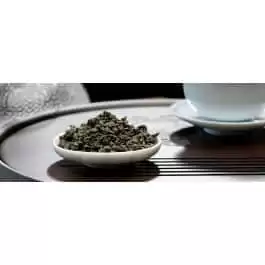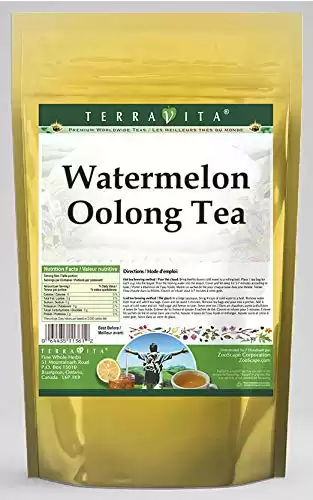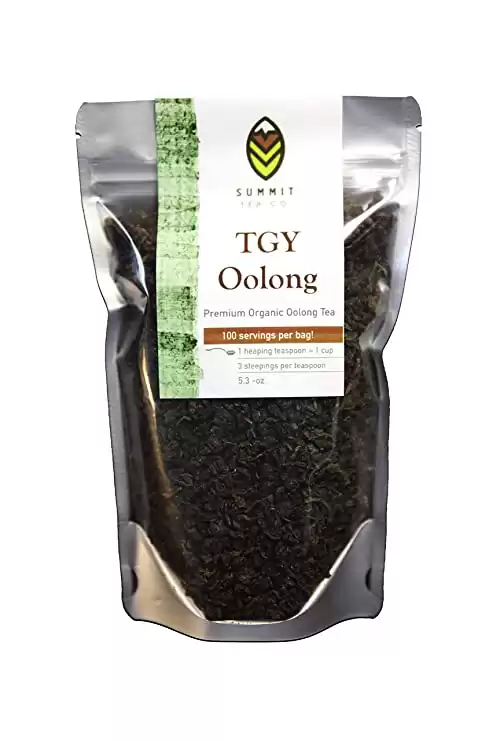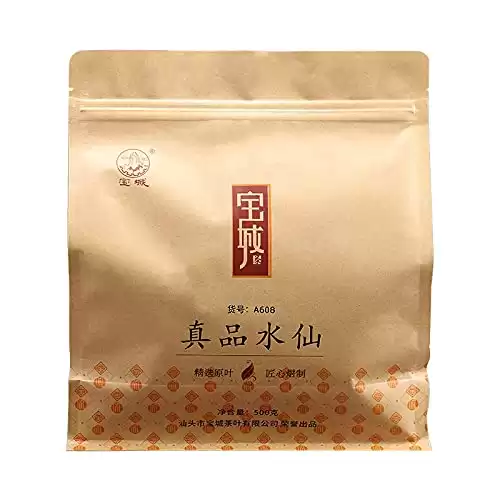Name a tea that’s a little bit of this, a some of that, and right in the middle lies Oolong. Oolong tea is a unique tea as it’s not quite a
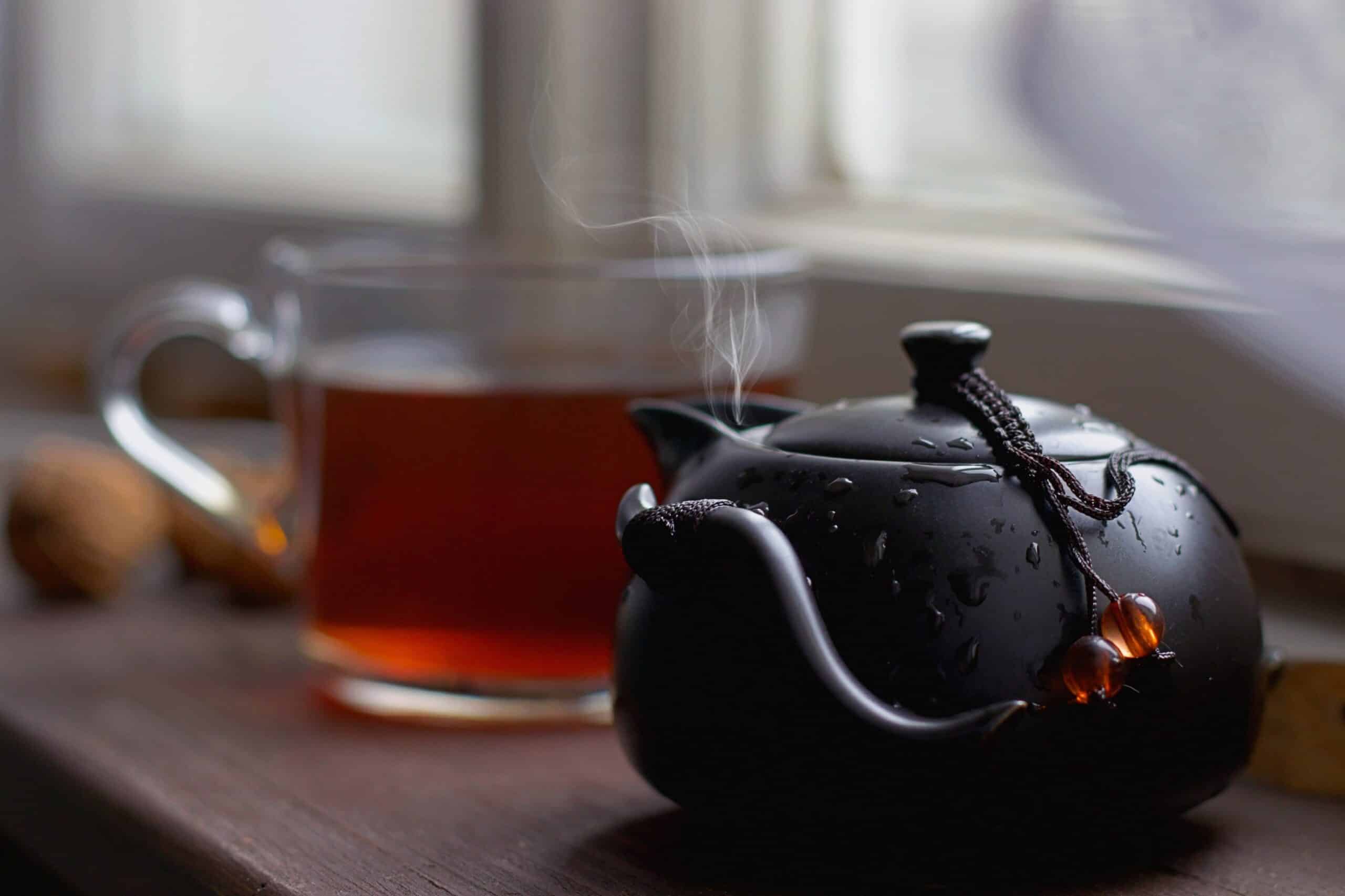
Let’s journey into the world of tea, once again we are exploring the benefits of tea, specifically oolong tea benefits. Before we get into the benefits I feel we need to know a little about the tea. It’s a lovely journey one that is as rich in history as the tea in your cup.
What is Oolong Tea?
Oolong tea is a cross between black and green tea. It’s a traditional Chinese tea. A tea that is longer inside those boundaries but has spread throughout the world. Oolong can be dark and earthy, but also light and slightly green. It’s a complex brew and when it’s brewed right, it’s incredible.
China and Taiwan now grow oolong tea as a primary export. The climate, soil, and conditions make it perfect for an incredible oolong tea. Two providences stand out for the cultivation of oolong tea. Those two are Fujian and Guangdong in the beautiful mountain regions. How lucky they are to have some land to grow and produce amazing tea.
This isn't your typical tea. With about half the caffeine of an average cup of coffee, it brings a complex flavor that's both floral and spicy.
The History of Oolong Tea
So many legends, and so much time. One of these legends I had never heard of before, I’ll let you figure out which one. Legends are fun, they are steeped in mystery and sometimes incredible happenings. Let’s examine how Oolong tea was founded.
Oolong tea has been traced to the Qing Dynasty. Before the Qing Dynasty, the making of tea cakes was an exquisite way of making tea. In short, there was a 150-year ban on the production, and the tea cakes could no longer be produced. All the equipment used to make them had been taken and/or destroyed.
So what else was there to do? Create another way to enjoy tea. The Buddhist monks and other tea makers created a charcoal way to roast tea. An accidental way or oxidation created our now Oolong tea.
Now here is the story, this accidental oxidation happened when a tea maker had picked the tea leaves. He was headed home when he was distracted by a deer. This distraction kept him from processing the tea leaves. Then the tea began to wilt and oxidize on its own, naturally.
We will never be sure if this happened but what we do know is that the tea process DID indeed happen and this began the process of creating Oolong tea. Several locations want to claim the name of fame to the Oolong tea, but what we do know, is Oolong was called WuLong and in translation, it is called Black Dragon.
No matter how it was “created”. By accident or on purpose Oolong tea is less oxidized. Oolong tea is allowed to start the process on its own resulting in the unique flavor we enjoy today.
Grown in the hilltops of Nantou, Taiwan, Orchid Oolong tea brews a lilac flavor that is buttery and smooth with a fresh orchid finish. Oolong tea leaves are hand-picked and basket tossed in a process known as oxidization. The oolong tea leaves are then rolled into kernels that wait to unfold with flavor in your teapot.
What is the Process to Make Oolong Tea?
Where do we start? We know the product and how it got its name. Remember Black Dragon equals Oolong.
Let’s start by picking the leaves, which ones shall we pick? The masters pick the top leaves and buds. Once we have all of our leaves we allow them to wither, on their own but in a controlled setting—something missing from the Quin Dynasty era: Controlled Environments.
The leaves are laid out to oxidize and lose moisture. How long do we allow this stage? That depends on which Oolong we are creating. Once the leaves reach their perfect oxidation they are rolled.
The rolling of the tea leaves allows for the flavor and nutrients to escape and more oxidation to occur. This process is valuable, without it, the tea would be bland and fall very short of spectacular. Plus the different time frames with therolling of the tea to be developed into one of the many different varieties of Oolong.
Once the tea leaves are at the notes and quality needed they are roasted to stop the oxidation process. The fire and heart stop the process and lock in the individual makeup of the tea.
In the final step, the teas are laid out for final drying and packed.
Floral and honey aroma with slightly baked fragrance
What are the Nutrients in Oolong Tea?
Just like all of our tea profiles, Oolong is no different. Great tasting tea with a lot of benefits. Oolongs contain the same antioxidants that help our bodies fight those free radicals. It fights like all the other teas. Oolong also helps our bodies fight off the effects of stress on our bodies.
Oolong tea also contains minerals like calcium, manganese, potassium, and magnesium. These are all essential vitamins and minerals to help our body function and stay healthy.
Oolong tea also contains the following vitamins: A, C, and a few of the essential B vitamins.
Oolong Tea Nutrients:
Tea advocates will tell you over and over about the health benefits of tea. Above all other beverages tea offers an enormous amount of health-boosting nutrients.
Polyphenols: Oolong tea contains polyphenols, including catechins and theaflavins. These polyphenols act as antioxidants. These antioxidants help support the body in so many ways and help the heart to keep on going and help fight off chronic disease.
Caffeine: Oolong tea as with our other teas contains caffeine. The caffeine content in oolong tea is lower than that in
Minerals: Oolong tea contains minerals such as potassium, calcium, and magnesium, which contribute to maintaining healthy bodily functions, including muscle and nerve function, bone health, and blood pressure regulation.
Health Benefits of Oolong Tea
Take all of the above, put it in your cup, and drink it. All these benefits, in one cup, from one tea, from one bush. It’s amazing. With all that here are some health benefits of Oolong tea
Digestive. Oolong tea supports your digestive health by aiding in the digestion process. It also can reduce inflammation, and fight off bad gut bacteria. Doing these things can help improve your digestion, and ease discomfort and bloating.
Metabolism: Let’s go. That is what tea says. The polyphenols in oolong tea are believed to enhance metabolism and fat oxidation. Regular consumption of oolong tea, coupled with a balanced diet and active lifestyle, may support weight management efforts.
Promotes Heart Health: Some studies suggest that oolong tea may help lower the risk of heart disease. Oolong tea can also reduce cholesterol levels and high blood pressure to protect the heart and stave off heart issues.
Enhances Mental Alertness: Oolong tea contains caffeine and theanine, which may promote mental alertness and focus. Combining these compounds can provide a gentle energy boost without the jitters associated with stronger caffeinated beverages.
Skin: The antioxidants in oolong tea help support the skin and fight against the free radicals that age us and take away our healthy skin glow.
Narcissus Tea is a tea variety grown in Mount Wuyi, which is known for its elegant, orchid-like aroma. Wuyi Narcissus Oolong Tea is one of the most famous oolong teas in China.
Side Effects of Oolong Tea
While oolong tea is generally safe for most people. It’s important to keep the following considerations in mind:
Caffeine Sensitivity: Oolong tea contains caffeine, which can cause side effects like restlessness, increased heart rate, or difficulty sleeping in individuals who are sensitive to caffeine. If you’re sensitive to caffeine, consider moderating your consumption or choosing decaffeinated oolong tea.
Interactions with Medications: Certain medications or specific health conditions can interact with oolong tea in an adverse way. Consult your healthcare provider before consuming a lot of Oolong tea.
Stomach Sensitivity: Drinking tea on an empty stomach can cause some individuals to stomach upset, acid reflux, or digestive issues. Listen to your body on what works for you and what does not.
Fujian Rain or Shui Xian, which translates to "Water Sprite," is an oolong produced in a similar style to Wuyi Oolongs. Therefore they share some similar traits, such as peachy-honey notes and a mineral "rock taste."
Conclusion
From such humble beginnings and the creation of a 150-year ban on tea comes our favorite Oolong. The health benefits shout, drink me and reap the rewards. The taste, the look, the variety, the history, and every single leaf are all health benefits to you from head to toe.
Welcome to your cup, Oolong tea, be healthy!
In conclusion, oolong tea offers a captivating blend of flavors, a rich history, and potential health benefits. Whether you’re a tea enthusiast or beginning to explore the world of tea. Oolong tea invites you to savor its intricate taste and embark on a journey of discovery. So, brew yourself a cup of oolong tea, take a sip, and let the flavors transport you to a world where time and taste unite. Cheers to the wonders of oolong tea.


